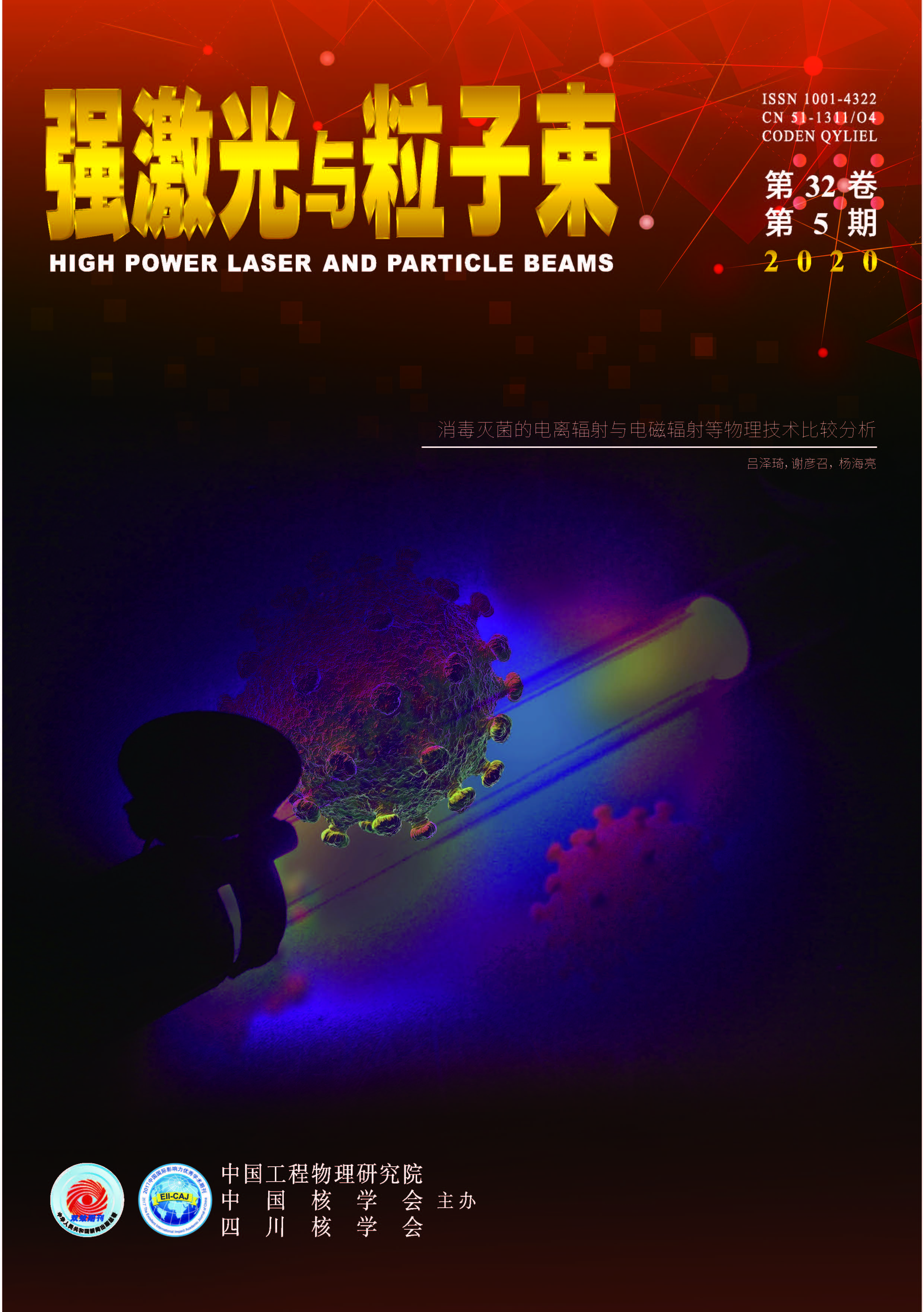2020 Vol. 32, No. 5
- Cover and Contents
- High Power Laser Physics and Technology
- Inertial Confinement Fusion Physics and Technology
- High Power Microwave Technology
- Particle Beams and Accelerator Technology•Research Letter
- Particle Beams and Accelerator Technology
- Pulsed Power Technology
- Nuclear Science and Engineering
- Advanced Interdisciplinary Science
The focusing method can be used to achieve continuous change of the focal length, so that the optical components at different object distances can be detected online. However, the focusing process is complicated and requires high accuracy of the focu...
Aiming at the fact that with the increasing output energy of oxygen-iodine chemical lasers in China, one of the main factors limiting the quality of the beam is the misalignment of the optical cavity during the light emission process, a method for se...
Magnetized Liner Inertial Fusion (MagLIF) is a new concept of controlled fusion, which combines both advantages of traditional magnetic confinement fusion (MCF) and inertial confinement fusion (ICF). It has promising application potentials because th...
This article intoduces the principle of extended X-ray absorption fine structure(EXAFS) as parameter diagnostic method on large laser facilities, as well as the experiments on SG-III prototype facility for high quality EXAFS. Using glass ball, CH cap...
Quasi-optical mode converters are usually used in gyrotrons to realize the conversion of high-order cavity mode to Gaussian beam. Using the scalar diffraction theory, the K-S phase-correcting optimization iterative algorithm Geometrical Optics and th...
Bi-phase modulator is one important component in SLAC energy doubler (SLED) pulse compression systems. Performance parameters such as precision and speed of phase shift have significant impact on SLED. In this paper, an S-band bi-phase modulator with...
This paper analyses the electron emission from cathode stick and multi-beam cathode rod of MBK and investigates the transport efficiency with different radius and drift tube length. The results show that with compact constructure the electron emissio...
In this paper, a novel hybrid modeling method is proposed for radio wave propagation prediction. This method is based on parabolic equation in cylindrical coordinates and method of moments. The method of moments is used to model the radio wave propag...
To study the effect regularities of radar equipment under in-band continuous wave radiation and reveal the interference mechanism of in-band continuous wave on radar, a certain step-frequency radar was used as the test object to establish a test plat...
To meet the urgent need of high-speed and high-quality wireless communication in tunnel environment, the high gain antenna suitable for tunnel environment is studied. A novel approach to improve the transmission quality of signals in tunnel by using ...
High-density, high-resolution, and high-speed X-ray digital imaging detection requires a high-energy microfocus and high-dose X-ray source. A high quality electron beam source is the key means to achieve this X-ray source. Based on the main accelerat...
Focal spot size is a key parameter for evaluating the resolving power of the accelerator. A reduction in the focal spot size can effectively improve the spatial resolution of the object. This work studies and designs collimator structures for spatial...
It is can be bring optical-transition radiation(OTR) when the charged partical constant speed passed through interface of two dissimilarity intermedium. The radiation showed polarization behavior while the charged partical arrive at incidence plane, ...
A novel adjustable aperture is developed for the low energy beam transport line (LEBT) of the China Accelerator Driven Subcritical System (C-ADS). Two relatively rotating mirror-symmetry cores are adopted for the adjustable aperture to scrape unwante...
Pulsed power technology has been widely used in industrial and biomedical applications. In many cases, high-voltage pulses with current amplitudes up to hundreds of amperes are required. Although solid-state Marx generators have been studied for a co...
A parallel finite difference time domain (FDTD) method combined with perfectly magnetic conductor (PMC) image method and CST software is firstly presented for computing the leakage field ( including sideward and backward leakage field) from verticall...
The armature-rail contact interface affects the characteristics of armature startup in the pulsed high current linear driver. Furthermore, the armature startup has an influence on the system efficiency and lifetime. This paper discusses the effect of...
This paper presents the study on the 241Am-Be radionuclide sources reference neutron radiation field metrology characteristics for calibrating area neutron dose monitoring instruments. The Monte Carlo method was used to simulate the neutron ambient d...
The distribution characteristics of hydrogen flow in local single space is a special concern of nuclear power plant and hydrogen storage device. In this paper, a single compartment of the experimental device is used as a geometric structure to establ...
Disinfection and sterilization technologies are of great significance in the food industry, medical field and water treatment, et al. Compared with traditional chemical and thermal methods, physical disinfection and sterilization approaches such as γ...




 Email alert
Email alert RSS
RSS

